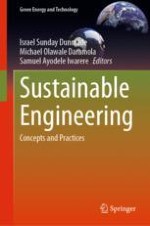2024 | OriginalPaper | Buchkapitel
Biochar Development in the Urban Environment: A Case Study of Sludge Char Production in Finland
verfasst von : Oana Iliescu, Mikko Jalas
Erschienen in: Sustainable Engineering
Aktivieren Sie unsere intelligente Suche, um passende Fachinhalte oder Patente zu finden.
Wählen Sie Textabschnitte aus um mit Künstlicher Intelligenz passenden Patente zu finden. powered by
Markieren Sie Textabschnitte, um KI-gestützt weitere passende Inhalte zu finden. powered by
